Zambia’s Export Crossroads: U.S. Tariffs, USAID Withdrawal, and the Quest for Economic Resilience
By KIC Analytic Unit | April 2025
On April 2nd, 2025, the United States imposed a 17% tariff on all imports from Zambia, marking a dramatic shift in trade relations between the two nations. This decision lands a heavy blow on one of Africa’s key mining and agricultural economies—Zambia—raising urgent questions about the country’s export resilience and broader economic trajectory.
At the same time, the U.S. Agency for International Development (USAID) officially announced the cancellation of several aid and development programs in Zambia, citing shifting foreign policy priorities. The compounded effect of both moves signals a new era in U.S.-Zambia relations—one fraught with challenges, but not without opportunity.
Understanding Zambia’s Trade Profile with the U.S.
In 2024, total bilateral trade between Zambia and the U.S. reached $282.9 million, with $169.1 million in Zambian exports.
These exports were heavily concentrated in:
- Precious stones and metals: $128.38 million
- Copper: $25.46 million
- Coffee, tea, and spices: $10.08 million
The new 17% tariff effectively raises the price of Zambian goods in the U.S. market. For example, a gemstone previously priced at ZMW100 would now cost ZMW117 for an American buyer. While this increase may seem moderate, the ripple effects on demand could be severe, especially in a global market where buyers are quick to substitute based on price.
Estimating the Impact Using Elasticity
Applying Price Elasticity of Demand (PED) to Zambia’s exports—particularly gemstones, which are luxury goods—reveals that Exports of precious stones could decline by $14M to $43M, depending on how price-sensitive U.S. buyers prove to be.
Zambia’s copper and agricultural exports may face less volatility, given steadier demand and limited substitutes, but the broader export contraction is inevitable if market adaptation is slow.
Zambia’s Competitive Position in Global Markets
Tariffs rarely operate in isolation. The global picture shows an uneven playing field:
| Country | U.S. Tariff on Precious Stones | 2024 U.S. Imports (Precious Stones) |
|---|---|---|
| Zambia | 17% | $128M |
| India | 27% | Higher volumes |
| Colombia | 10% | Moderate |
| Mozambique | 16% | $126M |
This presents Zambia with a dual-edged competitive dynamic:
- The tariff differential vs. India (27%) improves Zambia’s relative appeal.
- Conversely, Colombia’s 10% tariff puts Zambia at a disadvantage.
- Mozambique, with a 16% tariff and nearly identical export volumes, becomes a regional rival, especially with more developed logistics.
The Role of Infrastructure: Lobito Corridor as a Strategic Lever
To strengthen competitiveness, Zambia must urgently improve export logistics. The Lobito Corridor—a trilateral infrastructure project with Angola and the U.S.—aims to connect Zambia to the Atlantic coast, cutting costs and delays.
In this environment, logistics are not just infrastructure—they’re economic weapons.
The corridor’s success could:
- Reduce Zambia’s dependency on congested Southern routes.
- Lower export costs and restore some of the competitiveness eroded by tariffs.
- Serve as a geopolitical pivot, bringing the U.S. and Zambia back to the table through shared infrastructure interests.
USAID Withdrawal: A Blow or a Catalyst?
The U.S. decision to cancel multiple USAID programs in Zambia adds to the tension. Programs in health, agricultural development, women’s empowerment, and climate resilience are reportedly affected.
Economic Impacts:
- Loss of funding for critical public sector and rural development projects.
- Reduced capacity in climate-smart agriculture, food security, and youth employment initiatives.
- Potential GDP growth slowdown, especially in non-mining rural sectors.
Strategic Opportunity:
But this also opens space for Zambia to redefine partnerships:
- Regional Development Banks (AfDB, PTA Bank) can step in to fund agricultural innovation and SMEs.
- Emerging powers like China, India, and the UAE may seize the vacuum to offer new aid and trade deals.
- Private capital—impact investors and ESG-driven funds—may fill the gap, especially if Zambia improves governance and transparency.
The USAID exit could act as a wake-up call: to invest in self-reliance, private sector innovation, and South-South cooperation.
Untapped Potential: Exporting Services to the U.S.
One often-overlooked bright spot: services remain exempt from the new tariffs. This opens up a significant opportunity for Zambia to diversify and future-proof its U.S. trade portfolio by scaling up service exports.
Key Sectors with Export Potential:
- Business Process Outsourcing (BPO):
- Call centers, data entry, virtual assistance
- English-language fluency is a national strength
- Rising youth digital literacy offers a large talent pool
- Software and IT Services:
- Custom software development, cybersecurity, and mobile applications
- The Zambian Ministry of Science and Technology has played a critical role in accelerating this sector through strategic policy frameworks, investment incentives, and support for tech hubs and innovation clusters (such as the Lusaka Innovation Centre).
- Through the Digital Transformation Strategy and partnerships with educational institutions and private accelerators, the Ministry is actively building Zambia’s capabilities in export-ready tech talent, cloud services, and AI-based solutions that can serve U.S. companies.
- Initiatives include the rollout of regional coding academies, support for digital entrepreneurship, and proposals for data governance frameworks that align with global compliance standards—giving Zambia a potential edge in the global digital economy.
- Creative Industries:
- Animation, video editing, and design for U.S. media companies
- Music and digital content with Pan-African appeal
- Education and E-Learning:
- Online tutoring, curriculum development, content localization
- Cross-border education platforms could position Zambian talent as global educators
- Financial and Legal Services:
- Accounting, compliance, document review for U.S. firms
- Especially attractive under remote work and cost-efficiency models
- Reinsurance and ILS Services:
- Zambia is quietly emerging as a player in the export of reinsurance services, particularly in the Insurance-Linked Securities (ILS) segment.
- Companies like Klapton Re and KIC (Klapton Insurance Company – though not Zambian, but supports Zambian reinsurance activity) are beginning to handle US collateralized reinsurance portfolios—including parts of the U.S. catastrophe bond and structured reinsurance markets.
- As U.S. firms seek diversified risk carriers, Zambia’s evolving regulatory environment could enable it to become a hub for climate risk structuring and parametric insurance services.
How to Accelerate It:
- Expand the Digital Transformation Strategy with an export lens.
- Build tech-trade corridors linking Zambian startups and U.S. procurement platforms.
- Position Zambia’s Ministry of Science and Technology as a lead agency in coordinating service-export diplomacy, talent development, and regulatory readiness.
- Establish targeted partnerships with U.S. firms, accelerators, and cloud providers.
- Scale reinsurance education and licensing pathways to support financial services exports.
This non-tariffed services sector—powered by policy vision, youth talent, and digital innovation—could become Zambia’s next economic frontier, complementing its mineral exports with intangible assets that scale globally.
Zambia’s Strategic Response Toolkit:
To adapt and grow, Zambia must take a multi-pronged approach:
- Trade Diversification
- Build stronger ties with EU, GCC countries, and ASEAN.
- Accelerate AfCFTA integration to stimulate intra-African exports.
- Value Addition
- Promote local gemstone polishing and jewelry manufacture.
- Expand agro-processing facilities to create export-ready finished goods.
- Export Incentives
- Offer temporary tax relief or subsidies for affected exporters.
- Establish an Export Shock Fund for SMEs exposed to U.S. tariffs.
- Services Sector Push
- Expand exportable digital and professional services.
- Prioritize BPO, tech, and creative economy development.
- Diplomatic Engagement
- Push for tariff reconsideration under AGOA or WTO frameworks.
- Use the Lobito Corridor as leverage to restore strategic cooperation with the U.S.
Final Thought: Crisis, Catalyst, or Both?
Zambia stands at an economic crossroads. The combination of U.S. tariffs and USAID’s withdrawal presents significant short-term challenges—but also a rare moment of strategic recalibration. The overlooked exemption of services from tariffs may prove to be the safety valve Zambia needs to evolve its trade model.
If Zambia responds decisively—by building infrastructure, adding value, exporting knowledge, and forging new alliances—it can emerge not just resilient, but more globally relevant and economically dynamic than ever before.
Zambia’s Export Crossroads: U.S. Tariffs, USAID Withdrawal, and the Quest for Economic Resilience
By KIC Analytic Unit | April 2025
On April 2nd, 2025, the United States imposed a 17% tariff on all imports from Zambia, marking a dramatic shift in trade relations between the two nations. This decision lands a heavy blow on one of Africa’s key mining and agricultural economies—Zambia—raising urgent questions about the country’s export resilience and broader economic trajectory.
At the same time, the U.S. Agency for International Development (USAID) officially announced the cancellation of several aid and development programs in Zambia, citing shifting foreign policy priorities. The compounded effect of both moves signals a new era in U.S.-Zambia relations—one fraught with challenges, but not without opportunity.
Understanding Zambia’s Trade Profile with the U.S.
In 2024, total bilateral trade between Zambia and the U.S. reached $282.9 million, with $169.1 million in Zambian exports.
These exports were heavily concentrated in:
- Precious stones and metals: $128.38 million
- Copper: $25.46 million
- Coffee, tea, and spices: $10.08 million
The new 17% tariff effectively raises the price of Zambian goods in the U.S. market. For example, a gemstone previously priced at ZMW100 would now cost ZMW117 for an American buyer. While this increase may seem moderate, the ripple effects on demand could be severe, especially in a global market where buyers are quick to substitute based on price.
Estimating the Impact Using Elasticity
Applying Price Elasticity of Demand (PED) to Zambia’s exports—particularly gemstones, which are luxury goods—reveals that Exports of precious stones could decline by $14M to $43M, depending on how price-sensitive U.S. buyers prove to be.
Zambia’s copper and agricultural exports may face less volatility, given steadier demand and limited substitutes, but the broader export contraction is inevitable if market adaptation is slow.
Zambia’s Competitive Position in Global Markets
Tariffs rarely operate in isolation. The global picture shows an uneven playing field:
| Country | U.S. Tariff on Precious Stones | 2024 U.S. Imports (Precious Stones) |
|---|---|---|
| Zambia | 17% | $128M |
| India | 27% | Higher volumes |
| Colombia | 10% | Moderate |
| Mozambique | 16% | $126M |
This presents Zambia with a dual-edged competitive dynamic:
- The tariff differential vs. India (27%) improves Zambia’s relative appeal.
- Conversely, Colombia’s 10% tariff puts Zambia at a disadvantage.
- Mozambique, with a 16% tariff and nearly identical export volumes, becomes a regional rival, especially with more developed logistics.
The Role of Infrastructure: Lobito Corridor as a Strategic Lever
To strengthen competitiveness, Zambia must urgently improve export logistics. The Lobito Corridor—a trilateral infrastructure project with Angola and the U.S.—aims to connect Zambia to the Atlantic coast, cutting costs and delays.
In this environment, logistics are not just infrastructure—they’re economic weapons.
The corridor’s success could:
- Reduce Zambia’s dependency on congested Southern routes.
- Lower export costs and restore some of the competitiveness eroded by tariffs.
- Serve as a geopolitical pivot, bringing the U.S. and Zambia back to the table through shared infrastructure interests.
USAID Withdrawal: A Blow or a Catalyst?
The U.S. decision to cancel multiple USAID programs in Zambia adds to the tension. Programs in health, agricultural development, women’s empowerment, and climate resilience are reportedly affected.
Economic Impacts:
- Loss of funding for critical public sector and rural development projects.
- Reduced capacity in climate-smart agriculture, food security, and youth employment initiatives.
- Potential GDP growth slowdown, especially in non-mining rural sectors.
Strategic Opportunity:
But this also opens space for Zambia to redefine partnerships:
- Regional Development Banks (AfDB, PTA Bank) can step in to fund agricultural innovation and SMEs.
- Emerging powers like China, India, and the UAE may seize the vacuum to offer new aid and trade deals.
- Private capital—impact investors and ESG-driven funds—may fill the gap, especially if Zambia improves governance and transparency.
The USAID exit could act as a wake-up call: to invest in self-reliance, private sector innovation, and South-South cooperation.
Untapped Potential: Exporting Services to the U.S.
One often-overlooked bright spot: services remain exempt from the new tariffs. This opens up a significant opportunity for Zambia to diversify and future-proof its U.S. trade portfolio by scaling up service exports.
Key Sectors with Export Potential:
- Business Process Outsourcing (BPO):
- Call centers, data entry, virtual assistance
- English-language fluency is a national strength
- Rising youth digital literacy offers a large talent pool
- Software and IT Services:
- Custom software development, cybersecurity, and mobile applications
- The Zambian Ministry of Science and Technology has played a critical role in accelerating this sector through strategic policy frameworks, investment incentives, and support for tech hubs and innovation clusters (such as the Lusaka Innovation Centre).
- Through the Digital Transformation Strategy and partnerships with educational institutions and private accelerators, the Ministry is actively building Zambia’s capabilities in export-ready tech talent, cloud services, and AI-based solutions that can serve U.S. companies.
- Initiatives include the rollout of regional coding academies, support for digital entrepreneurship, and proposals for data governance frameworks that align with global compliance standards—giving Zambia a potential edge in the global digital economy.
- Creative Industries:
- Animation, video editing, and design for U.S. media companies
- Music and digital content with Pan-African appeal
- Education and E-Learning:
- Online tutoring, curriculum development, content localization
- Cross-border education platforms could position Zambian talent as global educators
- Financial and Legal Services:
- Accounting, compliance, document review for U.S. firms
- Especially attractive under remote work and cost-efficiency models
- Reinsurance and ILS Services:
- Zambia is quietly emerging as a player in the export of reinsurance services, particularly in the Insurance-Linked Securities (ILS) segment.
- Companies like Klapton Re and KIC (Klapton Insurance Company – though not Zambian, but supports Zambian reinsurance activity) are beginning to handle US collateralized reinsurance portfolios—including parts of the U.S. catastrophe bond and structured reinsurance markets.
- As U.S. firms seek diversified risk carriers, Zambia’s evolving regulatory environment could enable it to become a hub for climate risk structuring and parametric insurance services.
How to Accelerate It:
- Expand the Digital Transformation Strategy with an export lens.
- Build tech-trade corridors linking Zambian startups and U.S. procurement platforms.
- Position Zambia’s Ministry of Science and Technology as a lead agency in coordinating service-export diplomacy, talent development, and regulatory readiness.
- Establish targeted partnerships with U.S. firms, accelerators, and cloud providers.
- Scale reinsurance education and licensing pathways to support financial services exports.
This non-tariffed services sector—powered by policy vision, youth talent, and digital innovation—could become Zambia’s next economic frontier, complementing its mineral exports with intangible assets that scale globally.
Zambia’s Strategic Response Toolkit:
To adapt and grow, Zambia must take a multi-pronged approach:
- Trade Diversification
- Build stronger ties with EU, GCC countries, and ASEAN.
- Accelerate AfCFTA integration to stimulate intra-African exports.
- Value Addition
- Promote local gemstone polishing and jewelry manufacture.
- Expand agro-processing facilities to create export-ready finished goods.
- Export Incentives
- Offer temporary tax relief or subsidies for affected exporters.
- Establish an Export Shock Fund for SMEs exposed to U.S. tariffs.
- Services Sector Push
- Expand exportable digital and professional services.
- Prioritize BPO, tech, and creative economy development.
- Diplomatic Engagement
- Push for tariff reconsideration under AGOA or WTO frameworks.
- Use the Lobito Corridor as leverage to restore strategic cooperation with the U.S.
Final Thought: Crisis, Catalyst, or Both?
Zambia stands at an economic crossroads. The combination of U.S. tariffs and USAID’s withdrawal presents significant short-term challenges—but also a rare moment of strategic recalibration. The overlooked exemption of services from tariffs may prove to be the safety valve Zambia needs to evolve its trade model.
If Zambia responds decisively—by building infrastructure, adding value, exporting knowledge, and forging new alliances—it can emerge not just resilient, but more globally relevant and economically dynamic than ever before.



